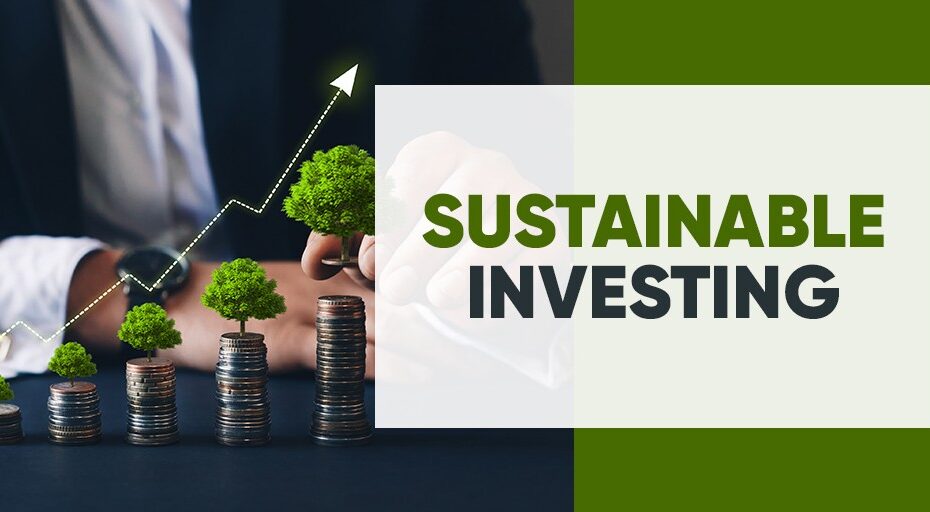Green investment has evolved from a niche sector into a mainstream strategy as investors see the long-term importance of sustainable activities. The growing knowledge of climate change, combined with the worldwide push for environmental, social, and governance (ESG) standards, has changed the way individuals and organizations distribute money. This shift is changing investment portfolios, accelerating innovation, and proposing a future in which profit and sustainability coexist.
Why green investing matters
Green investment entails putting money into businesses and projects that value environmental sustainability. This covers industries such as renewable energy, clean technology, sustainable agriculture, and environmentally friendly items. The purpose is to help firms who actively try to minimize their carbon footprints, save resources, and positively impact the environment.
With the global green economy expanding, green investments are no longer just about ethical considerations; they are also about financial gain. Reports reveal that organizations with high ESG performance outperform their less sustainable counterparts, demonstrating that environmental stewardship can be beneficial. Governments throughout the world are also helping this trend by enacting policies and incentives to reduce carbon emissions and promote sustainable energy.
Key drivers of the green investment movement
Consumers demand sustainability
Modern consumers are increasingly gravitating toward products and services from companies that share their values, particularly those related to sustainability. This has driven businesses to embrace greener methods, resulting in increased prospects for investors. For example, the development of electric vehicles and the discontinuation of fossil-fuel-powered vehicles are encouraging investment in renewable energy and battery storage.
Government Policy and Incentives
Governments around the world are implementing policies and incentives to encourage sustainability. The European Union’s Green Deal, the United States’ Inflation Reduction Act, and goals to achieve net-zero carbon emissions by 2050 are all encouraging firms to embrace greener technologies and practices. Investors gain from picking businesses that comply with these shifting standards.
Financial Benefits of ESG Investments
Many ESG-focused companies have decreased risks and improved long-term success. According to MSCI, organizations with high ESG profiles have greater financial health and less volatility. Investors wanting to develop robust portfoliosare increasingly turning to green enterprises as a safety net against environmental hazards and legislative changes.

How Investors Can Benefit From Green Investing
Renewable energy
Renewable energy is a key component of green investing. Wind, solar, and hydroelectric projects are expanding at a rapid pace, aided by government subsidies and technology breakthroughs that reduce prices. As the world moves away from fossil fuels, the need for renewable energy sources grows, making it a profitable market for investors.
Green Bonds
Green bonds, which are used to support ecologically friendly initiatives, have gained popularity as a relatively safe and successful fixed-income investment. They are issued by both governments and corporations, with the earnings going toward projects like renewable energy, sustainable transportation, and climate resilience.
Sustainable Agriculture and Food Technology
With the world’s population growing and food demands rising, sustainable agriculture and food technology are essentialareas for investment. Companies focused on plant-based proteins, vertical farming, and resource-efficient agriculture approaches provide investors with an opportunity to contribute to the solution to global food concerns while earning competitive returns.
Waste Management and Circular Economy
The circular economy, which emphasizes recycling and reusing resources to reduce waste, is gaining traction. Companies that excel in waste management, recycling technologies, and resource recovery are finding growinginvestment interest, as these industries help to create more sustainable industrial ecosystems.
The risks and challenges
While the potential for profit is high, green investing is not without hazards. Many green enterprises and renewable energy projects have significant initial costs and lengthy time horizons before profitability. There’s also the issue of greenwashing, in which corporations exaggerate their environmental efforts in order to attract investors. Careful investigation and analysis are required to avoid misleading promises and guarantee that investments truly contributeto sustainability.
Looking ahead: The role of innovation
The future of green investing will be greatly influenced by innovation. Electric vehicles, carbon capture, and sustainable materials will all play important roles in modernizing industry. Investors that stay ahead of these trends and focus on companies that are driving the transition to a low-carbon future will be well-positioned to benefit from sustainability.
Conclusion: A Profitable Path Forward
Green investing is no longer a trend; it is the future. Climate change, altering consumer preferences, and government mandates are all reshaping the investing landscape, and sustainable enterprises provide not just an opportunity to make a difference, but also a road to long-term prosperity. By combining financial objectives with environmental care, investors can help design a better future while earning financial rewards.
Whether you’re an individual investor or part of a larger organization, now is the time to think about incorporating green investments into your portfolio to capitalize on the world’s shift to a more sustainable future.
